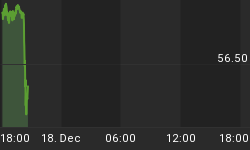Stock prices tumbled while the yield on the U.S. 10-year note fell to its lowest level in a month as the U.S. Bureau of Labor Services (BLS) June employment report shocked the market with a paltry gain of 18 000 jobs in payroll employment compared to a consensus forecast of 88 000. Payroll gains for April and May were also revised downwards.
The number was contrary to what the ISM PMI surveys and the ADP Survey had indicated.

Sources: ISM; US Bureau of Labor (BLS); Plexus Asset Management.
What do I read in the low employment figure? Not much, really. It is an extremely volatile time series heavily influenced by the government sector as can be seen in the graph below in which the BLS total non-farm payroll employment is depicted against the BLS private non-farm payrolls, with the difference being the government sector.

Sources: US Bureau of Labor (BLS); Plexus Asset Management.
The BLS private payroll employment is also much more volatile than the ADP private payrolls.

Sources: US Bureau of Labor; ADP; Plexus Asset Management.
To me the relationship between my GDP-weighted ISM composite PMI employment index and ADP private payrolls is more stable than that between the composite PMI employment index and the BLS private payrolls, indicating that the latter is a more trusty reflection of the underlying trend in employment. What is evident, though, is that over the past three months private non-farm payroll employment has been weaker than my composite PMI employment index suggested. Well, what would you expect with all the black swans around? Concerns about the global economy, especially on the back of the MENA uprising, rising oil prices, Japan's terrible twin disasters and the resultant disruptions in supply lines, as well as a possible default by Greece recently, would have led employers to err on the conservative side.

Sources: ISM; ADP; Plexus Asset Management.
An interesting development in the relationship between the composite PMI employment index and ADP non-farm payroll employment is that the latter has started to lag the composite PMI by one month since the middle of last year.

Sources: ISM; ADP; Plexus Asset Management.
In light of the above the composite PMI employment index for June indicates that ADP non-farm payroll employment is likely to bounce further in July. With auto-related production in Japan increasingly turning to normal, employment in the U.S. manufacturing sector is likely to increase. I will not be surprised if ADP non-farm payroll employment will reach a figure closer to 300 000 in the near future as the gap between it and the composite index closes - that compares to June's 157 000 new jobs. From an overall point of view the government sector is likely to continue to shed jobs, with the tighter budgets being implemented diluting the improvement in private employment.

Sources: ISM; ADP; Plexus Asset Management.

Sources: ISM; US Bureau of Labor; Plexus Asset Management.
I cannot be as negative as some market commentators, especially if my composite PMI employment index remains above 50, thereby indicating increased hiring. The following graph clearly demonstrates that cumulative overall non-farm payroll employment (government and private sector combined) will continue to rise if the PMI stays above 50.

Sources: ISM; US Bureau of Labor; Plexus Asset Management.
The same applies to the unemployment rate (please not the reverse axis).

Sources: ISM; US Bureau of Labor; Plexus Asset Management.
I therefore think that the market has overreacted to the employment number. The rally in bonds and the slump in equity prices could thus be another opportunity to realign portfolios.
Did you enjoy this post? If so, click here to subscribe to updates to Investment Postcards from Cape Town by e-mail.
















